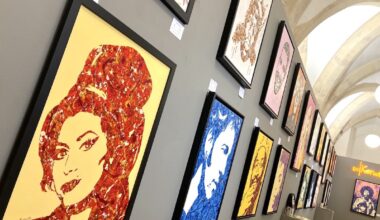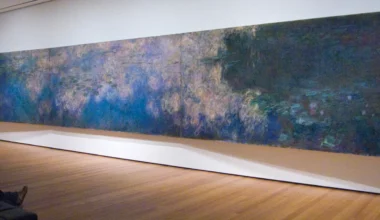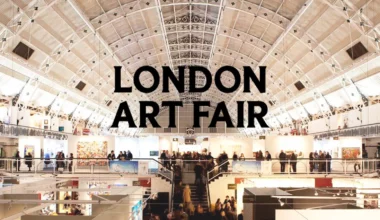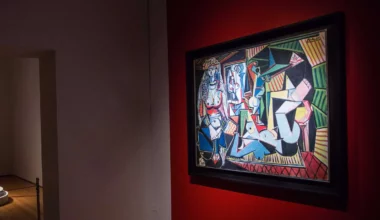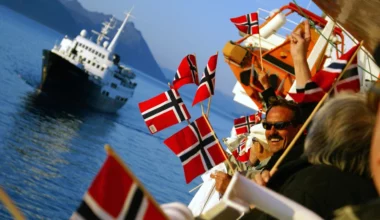Art Basel, the world’s premier art fair, kicked off its 2024 VIP preview days on Tuesday with a dynamic showcase featuring 285 galleries. Among these, 22 were newcomers, including prominent names like Karma, Tina Keng Gallery, Madelyn Gallery, Mayoral, Yates Art, and Parker Gallery.
Maike Cruse, who stepped into the role of Swiss Fair director last year, commented on the event’s evolving landscape: “Our global reach continues to grow as new collectors enter the market, providing vital support for the business and our core audience of established collectors. However, we are mindful that the art market is currently experiencing a period of adjustment. While there’s a sense of caution, the vibrant energy in the hall today signals that the art market remains robust and resilient.”
The fair opened to large crowds, and significant sales followed swiftly. Notably, an untitled work by Ashile Gorky from 1946-47 was sold for $16 million at the Hauser & Wirth booth, while a Yayoi Kusama sculpture exhibited in the Unlimited section by David Zwirner fetched $5 million.
Among the high-profile attendees were museum directors and collectors such as Charles Carmignac, Emma Lavigne, and Fabrice Hergott, who were seen viewing Agnes Denes’s new interpretation of her iconic “Wheatfield – A Confrontation” (1984). Originally exhibited in New York’s Financial District, this work made a powerful return at Art Basel, where visitors could walk through a path surrounded by wheat, drawing significant attention.
Below are some of the standout artworks at Art Basel 2024, which runs until June 16.
Sfeir-Semler Gallery: Marwan Rechmaoui, Etel Adnan, Samia Halaby “We wanted to bring some sunshine to Basel since we spend the year in Hamburg,” joked a representative from the Sfeir-Semler gallery, highlighting Marwan Rechmaoui’s sun-shaped wall sculpture. The gallery also featured a vibrant grid painting by Lebanese-American artist Etel Adnan and an acrylic piece by Palestinian-American artist Samia Halaby, a pioneer in abstract painting. However, the ceramic versions of the grotesque masks by Wael Shawky were the true showstoppers, depicting themes ranging from Egypt’s nationalist Urabi Revolution to the Crusades, drawing on Greek mythology and commedia dell’arte.
Sadie Coles HQ: Lisa Brice Fans of Gustave Courbet will recognize the reference to his famous 1866 canvas L’Origine du monde in Lisa Brice’s painting, rendered in her signature cobalt blue. However, Brice’s work subverts Courbet’s depiction of female anatomy by presenting the model actively painting herself. This reinterpretation is part of Brice’s ongoing effort to challenge traditional Western art history, transforming passive female subjects into empowered creators.
Perrotin: Jean-Michel Othoniel Perrotin’s expansive booth, spread across three floors, was a mini-fair within the larger Art Basel event. The gallery showcased works by Claire Tabouret, Johan Creten, Takashi Murakami, and Ali Banisadr, a new addition to their roster. The highlight, however, was Jean-Michel Othoniel’s “Wild Knots” sculpture, developed in collaboration with Mexican mathematician Aubin Arroyo. Inspired by Jacques Lacan’s theory of Borromean knots, the sculpture reflects how humans perceive the world. Othoniel’s works, blending emotional geometry with symbolic interpretations of plants and flowers, were also prominently featured in a nearby Kabinett space.
Meyer Riegger: Eva Koťátková Meyer Riegger’s booth was a tapestry of textiles, including a linen piece by Sheila Hicks and a table installation by Eva Koťátková, titled Dreaming about more skin (2022). The installation, composed of fabric, scissors, and a sewing machine, metaphorically reflects Koťátková’s broader practice of combining textiles and performance. Her work was also featured in the Parcours section with an installation titled My body is not an island, which came alive through performance, text, and sound.
Union Pacific: Nour Jaouda In Art Basel’s Manifesto section, which showcases emerging artists, Nour Jaouda presented a new installation that blends her architectural interests with a recent focus on natural landscapes. Inspired by Palestinian poet Mahmoud Darwish and her Libyan grandmother’s olive trees, the installation Shadow of Every Tree features vibrant textiles suspended behind grand metal doors, referencing Islamic motifs and colonial architectural heritage. Jaouda described the work as creating a “liminal space” that questions cultural identity and borders.
Galerie Chantal Crousel: Mona Hatoum Mona Hatoum’s Fossil Folly (Set 2) IV, a powerful installation of red barrels adorned with plant-like elements, made a direct transition from last year’s Sharjah Biennale to Art Basel. The work symbolizes dormant forces, with plant extensions appearing as ghostly resurrections from the barrels’ surfaces.
Goodman Gallery: William Kentridge Goodman Gallery, participating in Art Basel for the 40th time, featured notable works such as a tapestry by El Anatsui and bronze sculptures by William Kentridge, which sold for $600,000 to a private foundation in Belgium. Kentridge’s works, including new paintings created for an upcoming exhibition, explore themes of history and human experience, and they remain central to the gallery’s presentation.
Almeida & Dale: Heitor dos Prazeres Almeida & Dale introduced the work of Brazilian master Heitor dos Prazeres to an international audience for the first time. Dos Prazeres, a self-taught painter from Rio de Janeiro, depicted the vibrant realities of Brazil’s Black community through colorful scenes of everyday life. His works, created during Brazil’s military dictatorship, serve as a form of cultural resistance, capturing the festive spirit that was otherwise censored during that era.
Wooson Gallery: Omyo Cho Korean artist Omyo Cho’s dystopian novel Memory Searcher (2022), set in a future dominated by jellyfish-like creatures that carry human memories, has inspired a series of sculptures now on display at Wooson Gallery. These glass-blown figures, perched on stainless steel legs, evoke a sense of eerie movement and contemplation, challenging our perceptions of memory and identity.


